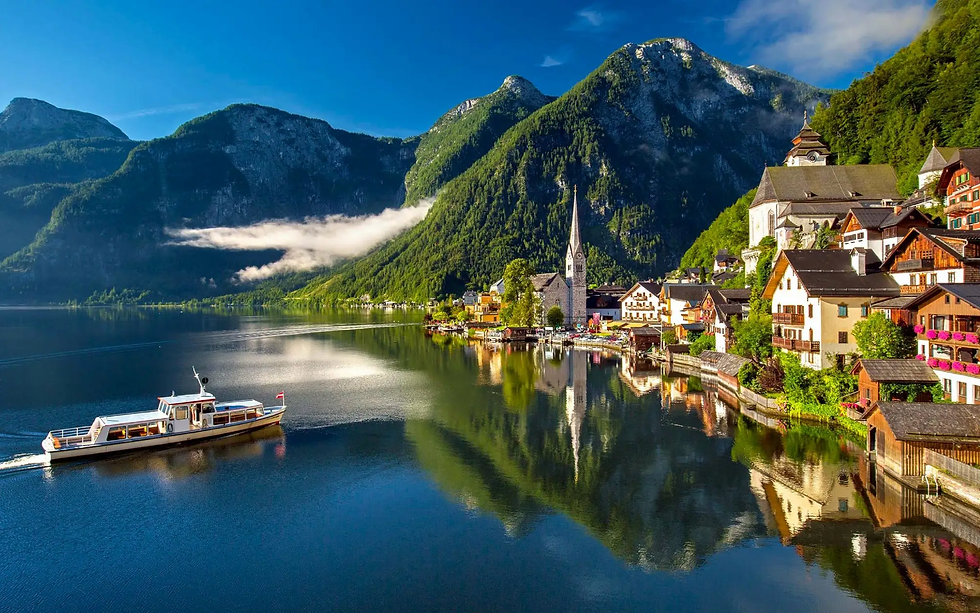Four Types of Spiritual Vacations — Which One Is Right for You?
- DPP Travel

- Oct 19, 2019
- 3 min read
Updated: May 16

Why are more travelers choosing spiritual vacations? Researchers point to several reasons — from our increasingly imbalanced work-life dynamic to the global resonance of figures like Pope Francis. Pop culture touchstones like Eat, Pray, Love and Wild might make this trend feel new, but as author Lori Erickson notes, “People have been making treks to holy sites for millennia — in fact, these types of locations are probably the oldest form of tourism.”
While the stereotype of the seeker-traveler is the gap-year student “finding themselves,” the reality is far more expansive. People from all backgrounds and life stages pursue spiritual journeys—to reflect, heal, mark milestones, or reconnect with something greater than themselves. Over 300 million people will visit major religious sites this year, and one in four Americans says they’re interested in a faith-centered trip.
Even if you don’t consider yourself religious, there are many meaningful ways to approach spiritual travel. Here are four types of spirit-nourishing journeys — which one speaks to you?
1. Person-Centered Journeys
These trips are often rooted in religious tradition but can also focus on individuals who’ve profoundly shaped your worldview — spiritual leaders, saints, poets, or change-makers. They offer a chance to walk in their footsteps, connect with their stories, and experience the places that shaped their lives.
Examples: Visit places connected to Jesus, Buddha, Rumi, Mother Teresa, or St. Francis. Or follow a theme, like influential women in religious history or the hometowns of your favorite saints. Where: The Holy Land, Ethiopia, India, Turkey, Italy.
2. Location-Centered Journeys
Some destinations are considered spiritual in themselves because of their historical significance, natural beauty, architectural marvels, or even perceived energy fields. These places invite awe, reflection, and a deeper connection to the world around us.
Examples: Sacred temples, mosques, synagogues, mountaintop monasteries, or energy vortexes in the desert. Where: Rishikesh, India; Sedona, AZ; Angkor Wat, Cambodia; Mt. Shasta, CA; The Blue Mosque, Istanbul; Uluru, Australia; Rio de Janeiro, Brazil.
3. Activity-Centered Journeys
If you find connection through doing, this trip offers hands-on ways to explore your spiritual self. Think immersive yoga retreats, silent meditation intensives, artistic expression, or volunteering abroad. You can even try being a monk for a month—a unique spiritual and cultural immersion in Nepal, Cambodia, or India.
Examples: Yoga trainings, silent retreats, service travel, creative retreats. Where: Taizé in Burgundy, France; centers across India, Thailand, Nepal, South Korea, and the U.S.; anywhere with trusted volunteer organizations.
4. The Journey Is the Destination
Pilgrimages are one of the most ancient and profound forms of travel — and they’re not just for the devout. These long, reflective walks allow you to disconnect from the noise of modern life and reconnect with your body, breath, and inner self. They are, as poet Gary Snyder put it, “a practice of heartiness and soul.”
Walking pilgrimages offer a deeply personal path to clarity and transformation for the spiritual and the simply curious.
Where: El Camino de Santiago, Spain; Char Dham, India; Kumano Kodo, Japan; Machu Picchu, Peru.
In today’s fast-paced world, it’s easy to feel untethered — like something essential is just out of reach. A spiritual vacation can be more than just a break; it can be a return to yourself.
If you feel the call to explore a journey that nourishes your spirit, DPP Travel is here to help you create a meaningful, personalized experience that resonates with your heart and values.
📩 Ready to take the next step? Let’s plan your spirit-centered trip together. Contact DPP Travel today to start your journey.




Comments